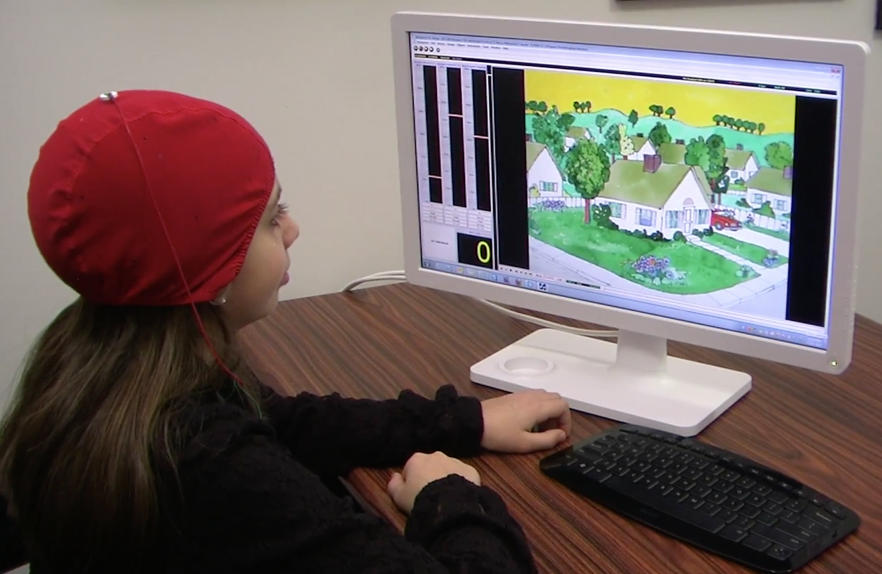Neurofeedback Therapy or Neurotherapy
The neuroscientific community recognises that abnormal brainwave patterns, shown in QEEG, are associated with a range of cognitive difficulties. These difficulties include ADHD, depression, anxiety, and psychiatric disorders. Neurotherapy, also called Neurofeedback Therapy, is a biofeedback technique that enables individuals to normalise their brain’s electrical activity. Just as physical exercise increases fitness, Neurotherapy is physical exercise for the brain that improve symptoms.

During typical training, one or two sensors (called ‘electrodes’) are placed on the head, and one on each ear lobe. These sensors are connected to a high-tech EEG device which measures the brain’s electrical activity, much like a physician will listen to someone’s heart from the surface of the chest. The electronic equipment provides real-time (instantaneous) audio and visual feedback about brainwave activity. No electrical currents are put into the brain. The brainwave patterns are recorded, relayed to the computer, and instantly analyzed, before being represented as graphs.
There are currently more than 20,000 clinicians worldwide using Neurofeedback therapy for permanent remediation of around 80% of ADHD treatments, and for reducing the symptoms of other mental health disorders without the use of drugs. The work of psychologists, psychiatrists, neurologists, and medical practitioners, using Neurotherapy, goes largely unrecognised. This is partly due to lack of interest in the medical and pharmaceutical community.
How Does Neurotherapy Work?
Ordinarily, you cannot influence brainwave patterns because you lack awareness of them. However, given the opportunity to see your brainwaves on a computer screen, a few thousandths of a second after they occur, you can learn to influence and change them through the process of operant conditioning. Operant conditioning involves reconditioning and retraining the brain, on a sub-conscious level. At first, the changes are short-lived, but will gradually become more enduring. Through this process, involving continuing feedback, coaching, and practice, Neurotherapy successfully promotes healthier brainwave patterns in most people. As a form of physical exercise for the brain, Neurotherapy enhances cognitive flexibility and control.
Neurotherapy sessions can be done at the clinic or in your own home.
What is Neorofeedback Therapy Effective For?
- Reducing hyperactivity and impulsivity
- Improving attention and concentration deficits
- Improving memory and learning difficulties
- Increasing processing speed
- Optimising brain function and mood
Neurotherapy strengthens memory, attention, concentration, processing speed, and improves learning difficulties, and mood. The computer training includes motivational stimuli to improve compliance and facilitate speed of learning.
